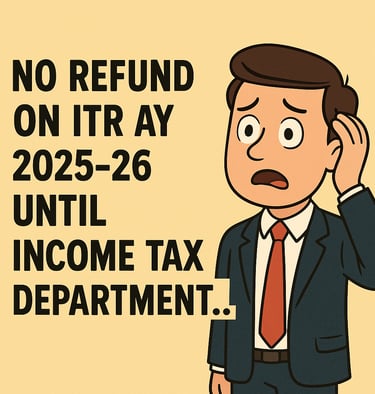Understanding the Delays in Income Tax Refunds for AY 2025-26
7/4/20251 min read


The Current State of Income Tax Refunds
As we approach the fiscal year 2025-26, taxpayers are increasingly concerned about the delays in receiving their income tax refunds. The Income Tax Department has announced that, as of now, no refunds are being issued. This situation arises from various underlying complexities linked to the verification process of previous year returns and the handling of potential mismatches and high-risk claims.
Reasons for Refund Delays
The primary factor contributing to these delays is the Income Tax Department's rigorous automated systems. These systems are designed to meticulously cross-check deductions, tax credits, and data from Tax Deducted at Source (TDS) as recorded in the AIS (Annual Information Statement) and Form 26AS. Consequently, if your tax return is flagged during these checks, its status may indicate that it is 'under verification' or that the 'refund will be released after completion' of thorough scrutiny.
What Taxpayers Can Do
For taxpayers awaiting refunds, it is crucial to take proactive measures to ensure that the process is streamlined. Here are some recommended actions:
Ensure Accuracy of Information: Double-check that all the details submitted in your return align with those in your AIS and Form 26AS. Discrepancies can lead to delays in processing your refund.
Respond Promptly to Notices: If you receive any communication from the Central Processing Centre (CPC), respond quickly to resolve any issues. Delays in response can further prolong the verification process.
Monitor Your Refund Status: Keep an eye on the status of your refund. If it remains pending for more than 90 days, you may need to raise a grievance through the formal channels provided by the Income Tax Department.
It is also worth noting that Section 244A allows taxpayers to receive interest on delayed refunds, further emphasizing the importance of monitoring the situation closely. By following these steps and remaining informed, taxpayers can navigate the complexities of the current verification process more effectively.